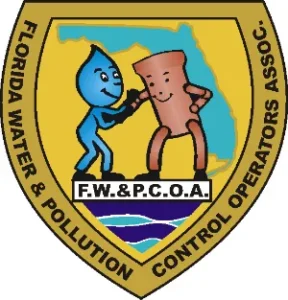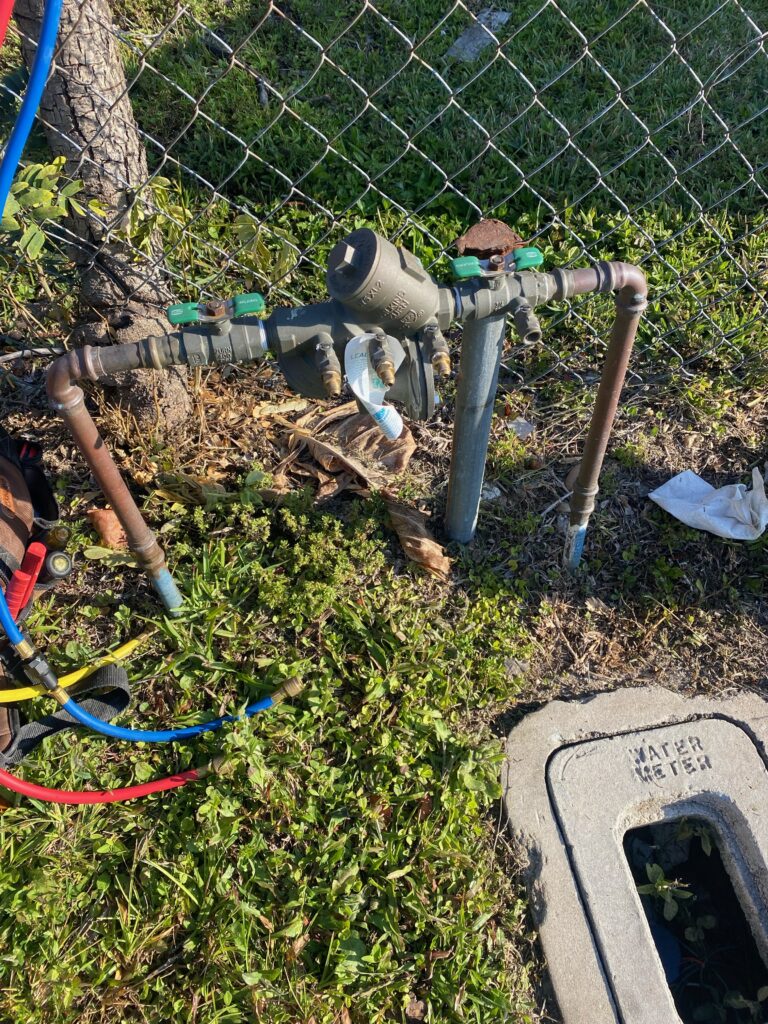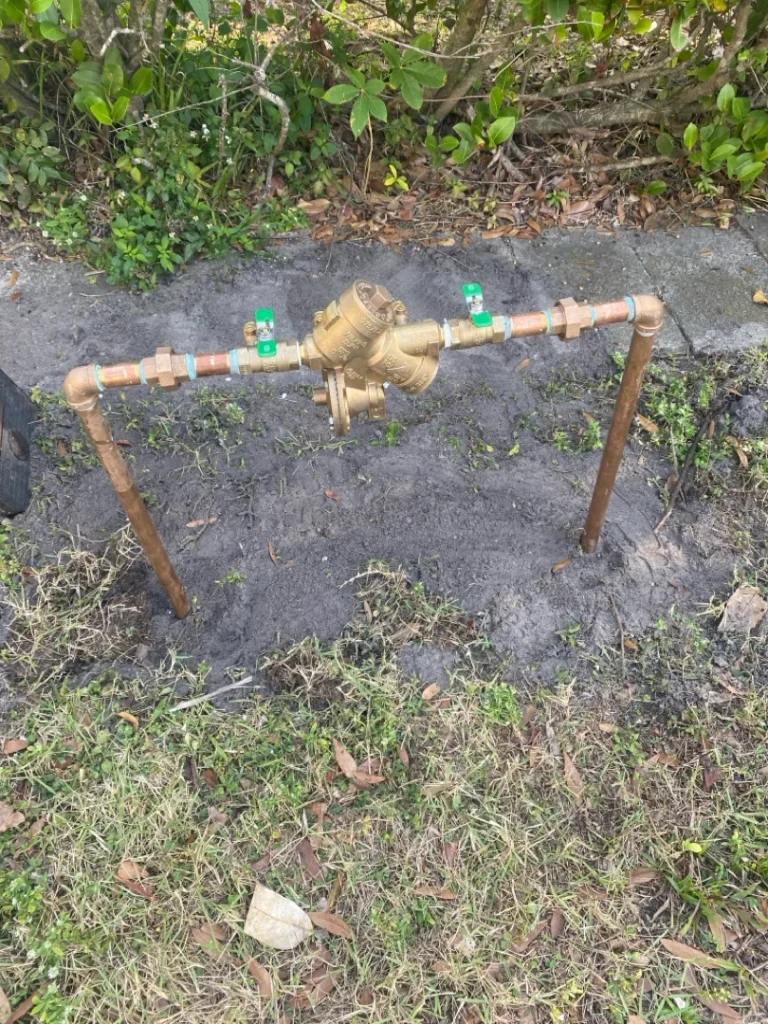NFM Plumbing provides expert backflow preventer services, ensuring your water system’s safety and compliance with stringent regulations.

The team at NFM Plumbing stands at the forefront of this crucial field, backed by a team whose expertise is certified by water distribution C and B licenses and FWPCOA (Florida Water and Pollution Control Operators Association) backflow certifications.
We will guide you through our key services, highlighting our thorough approach to installing, maintaining, and repairing backflow preventers. We often overlook the quality of our drinking water, yet it demands strict safeguards. Backflow preventers are crucial in this regard, designed to prevent contaminated water from entering our clean supply.
Understanding Backflow Prevention

Backflow prevention is a critical component in maintaining the safety and quality of municipal water systems. A backflow preventer stops water from reversing flow in plumbing systems. This action prevents contamination of clean water with dangerous substances like pesticides, chemicals, or waste. Now, let’s explore the basics of backflow prevention. We’ll cover backpressure and backsiphonage types and where they typically occur.
This can happen in two main ways:
- Backpressure: Occurs when the pressure in a non-potable system exceeds the pressure in the potable water system, causing contaminated water to flow back into the clean water supply.
- Backsiphonage: This occurs with a sudden water pressure drop, such as during a water main break or when opening a fire hydrant. This creates a vacuum, pulling contaminants into the clean water supply.
Key scenarios where each type of backflow might occur include:
- For Backpressure:
- High-pressure irrigation systems connected to home water systems without proper backflow prevention.
- Industrial processes that generate pressure higher than the supply water pressure.
- For Backsiphonage:
- Breaks in the water main, where the loss of pressure can draw contaminated water into the potable system.
- Heavy water usage, such as firefighting, that dramatically drops water pressure in parts of the water distribution system.

NFM Plumbing’s expertise ensures that the right preventive measures are in place, protecting against both types of backflow with devices that are meticulously installed and maintained.
Installation Services
Installing a backflow preventer requires deep plumbing knowledge, adherence to local laws, and understanding of a property’s needs. We lead in this area, offering tailored installation across various settings, from homes to vast industrial sites. Our work meets strict standards, including those set by local authorities and NFPA 13, guaranteeing precise installations with little impact on daily activities.
Our approach to backflow preventer installation is meticulous and tailored to each property’s specific needs, ensuring that every installation is compliant with local regulations and standards for optimal safety and efficiency. Here’s an overview of our step-by-step process:
- Initial Assessment and Consultation: We begin with a thorough assessment of the property to understand its unique requirements. This involves analyzing the water system layout, identifying potential risks of contamination, and determining the most suitable type of backflow preventer for the property.
- Design and Planning: Based on the initial assessment, a custom installation plan is developed. The plan prioritizes the property’s water pressure and usage needs. It also focuses on specific demands of places like assisted living facilities, healthcare institutions, and industrial settings. Additionally, it ensures the selected backflow preventer aligns with the water system’s needs and complies with regulations.
- Installation: The installation process is executed with precision, following the custom plan developed during the design phase. NFM Plumbing ensures minimal disruption to the property’s water supply and daily operations. For complex environments such as healthcare facilities, we coordinate closely with facility management to schedule installations at times that least impact patient care and operations.
- Testing and Certification: After installation, the backflow preventer is rigorously tested to ensure it operates correctly under various conditions. NFM Plumbing secures all needed documentation and certifications, ensuring compliance with local laws. This gives property owners confidence in their water system’s protection against backflow.
- Education and Training: After the installation, we provide property owners and maintenance staff with essential information on the operation, testing, and maintenance of the backflow preventer. This ensures that the device remains functional and compliant over time.
- Ongoing Support and Maintenance: NFM Plumbing offers comprehensive maintenance services to keep the backflow preventer in optimal condition. That includes regular inspections, testing, and any necessary repairs or replacements. This proactive approach helps prevent issues before they arise, ensuring the long-term integrity of the property’s water supply.
Annual Inspections and Recertification
To guarantee the ongoing functionality and compliance of backflow preventers, we offer thorough annual inspections and recertification. Annual inspections are crucial. They guarantee that each part of the backflow preventer works correctly, protecting the water supply. Additionally, adhering to local and city requirements during these inspections is vital. NFM Plumbing’s documentation and reporting processes meet regulatory standards, offering clients reassurance.
Frequently Asked Questions
Ensuring clean and safe water supply requires understanding the intricacies of backflow prevention. While above offered a comprehensive guide to the services provided by NFM Plumbing, there are always more questions to be answered. Here are some additional queries that delve deeper into the topic, providing further insights.
What are the common signs that a backflow preventer needs repair or replacement?
Signs like reduced water pressure, water discoloration, or leaks may indicate a failing backflow preventer. These symptoms suggest it’s not working right, possibly letting contaminated water into the clean supply. Promptly inspecting and, if needed, repairing or replacing the device is crucial for water safety. NFM Plumbing, a licensed professional team, can handle these critical tasks efficiently.
How does local climate impact backflow preventer maintenance?
Local climate can significantly affect the maintenance needs of backflow preventers. In areas with freezing temperatures, these devices are susceptible to damage from frozen water expanding within the assembly, which can crack the housing or internal components. Conversely, in very hot or dry climates, seals and gaskets may degrade faster due to heat and sun exposure. Regular maintenance schedules adapted to local climate conditions are essential for preventing such issues.
Can a homeowner install or replace a backflow preventer themselves?
DIY projects are popular, yet backflow preventer work demands specialized knowledge and tools. Moreover, it must follow local codes. Therefore, hiring certified experts like NFM Plumbing is wise. They ensure installations meet local standards and safeguard the water supply.
What is the difference between a double check valve and a reduced pressure zone backflow preventer?
A double check valve (DCV) backflow preventer has two check valves. It stops backflow mechanically and works well in low-risk situations. Meanwhile, a reduced pressure zone (RPZ) backflow preventer includes two check valves and a relief valve. This setup opens to the atmosphere if a valve fails, ensuring a higher contamination protection level. RPZs are ideal for high-risk contamination areas, as they prevent backflow from entering the clean water supply by expelling it.
For further reading on backflow prevention and the importance of such services, visit:
- University of Florida’s TREEO Center outlines regulations and practices for cross-connection control to ensure the safety of public water systems. It emphasizes the prohibition of cross-connections and the importance of maintaining separation distances between reclaimed water lines and potable water mains. Read more at TREEO – University of Florida.